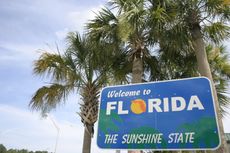Smart-Phone Advertising Helps Small Firms Grab Business
Services that target ads and offers to customers around the corner offer a new inroad.
Location-based services are streaming ads-coupons and other promotional offers to cell phones, GPS navigators and other mobile devices belonging to customers who are identified as being nearby.
And the rapid growth of smart phones spells an opportunity for small firms, particularly, to establish strong, local name recognition and to snag impulse buyers and out-of-towners.
How do location-based services work? A number of ways: Mobile phones and other devices have some sort of locator -- a GPS marker, a trackable Wi-Fi account signal or cell ID number-- that marketers can use to pinpoint a user's location. Even in cases where the devices don't have such equipment, consumers often volunteer their location, using a ZIP code, for example.

Sign up for Kiplinger’s Free E-Newsletters
Profit and prosper with the best of expert advice on investing, taxes, retirement, personal finance and more - straight to your e-mail.
Profit and prosper with the best of expert advice - straight to your e-mail.
Already, about 17% of all mobile phone subscriptions are for smart phones -- iPhones, BlackBerrys, Androids and the like. They operate like mini computers, allowing easy Web browsing, pop-up ads and so on -- perfect for location based marketing. By 2013, smart phones’ share of the market will near 40%. And that doesn’t count in-car GPS devices, iPod Touches and others -- even e-readers, such as Barnes & Noble’s Nook -- that use locator technology able to pinpoint where consumers are and to receive marketing messages.
To cash in, many firms start with local mobile search advertising, buying the rights to keywords that trigger their ads to pop up alongside a user’s Google search, for example. Another option is to buy traditional display advertisements that appear on mobile Web site pages. In both cases, however, the ads appear only when the user is identified as being in the geographic target area.
Mobile coupons and other promotional offers are popular too. Yowza!!, for example, charges businesses $50 per location (less for larger chains) to include restaurants, retailers and others in their application, which can be uploaded to Apple’s mobile devices. Consumers who use Yowza!! launch the application on their iPhone or iPod Touch to get a list of offers from stores nearby, while retailers control the discounts and other offers made online. Individual retailers and sellers can also choose to create their own application for Apple or other products, usually for about $500. But, as Yowza!! cofounder August Trometer points out, companies get a broader reach through Yowza!! and other such aggregators. Consumers don’t want “to have a hundred different apps from a hundred different merchants,” Trometer says. So for retailers, “it’s about picking the service that has that critical mass.”
Another option attracting the attention of consumers -- and investors: Location based services that incorporate social networking. They not only help users find nearby store locations, but also promote buzz, by encouraging shoppers to share their opinions with their friends. The social LBS Gowalla, which recently finished an $8.4-million round of financing, utilizes GPS and Wi-Fi locators to feed users a list of nearby vendors whenever they open the Gowalla app. Companies can help spur chatter about their business by offering discounts to consumers who log visits to their stores or offering other goodies to those who “spread the word.”
Consumers -- particularly young, mobile ones -- like the freedom to plan while on the go that LBS offers. While some folks are even willing to pay for services -- navigation programs such as the Verizon Family Locator, for example, and one-time fees for some Apple, BlackBerry and Nokia applications -- it’s free applications and services that will drive growth in LBS over the next few years.
Google’s navigation service and business-search feature “Near Me Now” are particularly notable freebies, since most users are already accustomed to using Google on their PCs. Google’s quick rollout of a number of free LBS shows “they realize that the future is coming up much more quickly than anybody had thought with the primacy of mobile devices,” says Kip Cassino, vice president of research for Borrell Associates, an advertising research and consulting firm.
The rapid growth means most LBS providers haven’t yet had a chance to measure returns on their investment. But certain consumer groups are clearly ripe for the services. Young users and business folks who are often out of their offices are obvious markets and will be early adopters of the technologies. But Gowalla’s users run the gamut, according to CEO and founder Josh Williams. “We’re seeing mothers take their kids out and go to the park on weekends and then writing (on Gowalla), ‘Hey, this is a really great park or venue to take the family.’”
Get Kiplinger Today newsletter — free
Profit and prosper with the best of Kiplinger's advice on investing, taxes, retirement, personal finance and much more. Delivered daily. Enter your email in the box and click Sign Me Up.
-
 Did Florida’s Chance at $1,000 in Property Tax Rebates Vanish?
Did Florida’s Chance at $1,000 in Property Tax Rebates Vanish?State Taxes The Florida Legislature bypassed Gov. Ron DeSantis’ wish to cut property taxes and instead voted to lower the state’s sales tax.
By Gabriella Cruz-Martínez Published
-
 Wall Street Is Worried About Apple Stock. Should You Be Too?
Wall Street Is Worried About Apple Stock. Should You Be Too?Analysts expect Trump's sweeping tariffs to have an outsized impact on Apple stock. How concerned should investors be?
By Karee Venema Published
-
 Rising AI Demand Stokes Undersea Investments
Rising AI Demand Stokes Undersea InvestmentsThe Kiplinger Letter As demand soars for AI, there’s a need to transport huge amounts of data across oceans. Tech giants have big plans for new submarine cables, including the longest ever.
By John Miley Published
-
 What DOGE is Doing Now
What DOGE is Doing NowThe Kiplinger Letter As Musk's DOGE pursues its ambitious agenda, uncertainty and legal challenges are mounting — causing frustration for Trump.
By Matthew Housiaux Published
-
 A Move Away From Free Trade
A Move Away From Free TradeThe Letter President Trump says long-term gain will be worth short-term pain, but the pain could be significant this year.
By David Payne Published
-
 The Explosion of New AI Tools
The Explosion of New AI ToolsThe Kiplinger Letter Workers and consumers soon won’t be able to escape generative AI. Does that mean societal disruption and productivity gains are right around the corner?
By John Miley Published
-
 Trump’s Whirlwind Month of Crypto Moves
Trump’s Whirlwind Month of Crypto MovesThe Kiplinger Letter The Trump administration wants to strengthen U.S. leadership in the cryptocurrency industry by providing regulatory clarity.
By Rodrigo Sermeño Published
-
 Excitement Over AI Propels IT Spending
Excitement Over AI Propels IT SpendingThe Kiplinger Letter IT sales set to surge in 2025 as businesses rush to adopt generative AI.
By John Miley Published
-
 Donald Trump Tests His Limits
Donald Trump Tests His LimitsThe Kiplinger Letter President Encounters Legal Obstacles in Pursuit of Ambitious Agenda.
By Matthew Housiaux Published
-
 Another Down Year for Agriculture
Another Down Year for AgricultureThe Kiplinger Letter Farmers brace for falling incomes, widening trade deficits
By Matthew Housiaux Published